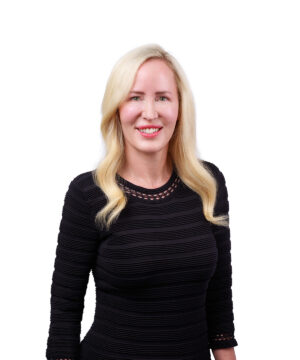Introduction
In two recently released cases, the British Columbia Supreme Court considered an insurer’s ability to have an insurance policy declared void ab initio by reason of material misrepresentation and material change in risk. The insurer was successful in one case and unsuccessful in the other, confirming the highly fact-dependent nature of this inquiry. Both cases were dealt with by summary trial procedure on affidavit evidence.
Chase v. The Personal Insurance Company
On August 1, 2012, the plaintiffs, Mr. and Ms. Chase, obtained a standard “principal residence” insurance policy from the defendant insurer. During the application process, Ms. Chase had a telephone conversation with an employee of the defendant and advised that the premises were for residential use only. Ms. Chase also advised that there were no detached structures on the premises of 800 square feet or larger and there were no pets or other animals on the premises.
Thereafter, the policy was renewed annually without the insurer being informed of any change in the use of the premises, which included using the premises as a farm, leasing a portion of the premises to a third party for a cow and calf operation and using the premises to raise pigs. The evidence showed that the plaintiffs obtained “farm status” for tax purposes. A large steel frame fabric-covered building was also installed on the premises. That building collapsed in February 2017 due to a heavy snow load. The plaintiffs made a claim under the policy to recover losses resulting from the collapse.
The insurer denied the claim on the basis of a material misrepresentation, declared the policy void and returned the premiums. The plaintiffs sued for breach of contract and sought recovery of the value of the building.
The Supreme Court reviewed the affidavit evidence filed on behalf of the plaintiffs and defendant. The insurer tendered evidence stating that if the plaintiffs had told the insurer that a significant portion of the premises (the pasture land) had been rented to another party for a farm purpose such as raising cattle, the defendant would have automatically denied the application. As a matter of policy, renting or leasing property to a third party and farm operations are not insured by the defendant. Further, the collapsed building exceeded the 800 square foot limit discussed when the policy was applied for and issued.
The insurer also tendered expert evidence from an underwriter stating that the extent of farming-related activity on the premises would be considered “too substantial for acceptance under a normal homeowner’s policy”.
The court reviewed settled law, stating that an insured has an obligation of utmost good faith to provide accurate particulars of all information relevant to the risks being insured by the proposed insurance coverage. The insurer, acting on the utmost good faith of the proposed insured, is entitled to trust those representations to determine if they are prepared to accept the risk of loss for the premium to be paid. A failure by the insured to disclose material information is fatal to a claim for recovery under the policy. It is irrelevant whether the insured’s failure to disclose is deliberate, inadvertent, overlooked or unintended.
Although the use of the property as a farm was not the cause of the building collapse which gave rise to the claim, the court accepted that it is “clear that the use of insured property is relevant to the reasonable insurer and that a misrepresentation as to the use of the property is a material misrepresentation.”
The court accepted that the class of risk on the property was not within the guidelines for a homeowner’s policy and therefore the plaintiffs’ application would have been denied had they made full disclosure to the insurer regarding the property usage. The plaintiffs misrepresented the use of the property, both initially and at the time of each of the annual renewals of the policy of insurance. The court also held that the plaintiffs had a positive duty to disclose changes to the use of the property.
As a result, the insurer was successful in dismissing the plaintiffs’ claim.
Nagy v. BCAA Insurance Corporation
The plaintiffs, Mr. Nagy and Ms. Kuhn, purchased a homeowner’s insurance policy from the defendant insurer. After the plaintiffs’ home and contents were destroyed by fire, the plaintiffs sought coverage under the policy. The insurer denied coverage on several grounds, including a material change in risk and misrepresentation for failing to disclose the following: that a previous insurer had declined to renew coverage on the residence, that the defendant insurer had voided the plaintiffs’ insurance coverage twice more than ten years prior to the issuance of the policy, an attempted break-in at the home and two previous claims.
The insurer raised two additional arguments at the hearing of the summary trial, which the court dismissed. These were that there was no formation of a contract and that the plaintiffs swore a fraudulent proof of loss.
The insurer argued that the policy was void ab initio because there was a material change in risk in relation to the occupancy of the home. Specifically, the plaintiffs failed to notify the insurer that neither of them were occupying the home. The insurer argued that it bound the policy on the understanding that Mr. Nagy would be occupying the home at least 50% of the time. The insurer stated this belief was based on comments Mr. Nagy made during a telephone conversation with one of its employees leading up to the plaintiffs’ application for the policy.
The court reviewed Mr. Nagy’s evidence and found there was no change in his occupancy of the home after the plaintiffs entered into the policy. Mr. Nagy disclosed, during the “pre-application” conversations with the insurer’s representative, that he would not be living at the home full time but would be there on the weekends. There was no factual basis for the insurer to argue a material change in risk.
The court further held that even if there had been a change in occupancy, the insurer failed to establish that such change was material to the risk. This is a question of fact. A change material to the risk is one that would have influenced a reasonable insurer to decline the risk or stipulate for a higher premium. This is an objective test; the subjective views of the insurer alone will generally be insufficient to satisfy the reasonableness inquiry. A finding of reasonableness typically involves evidence both of the subjective view of the specific insurer and objective evidence confirming that those views are held by the insurance industry at large.
Finally, the court considered whether the policy was void ab initio for material misrepresentation or an omission resulting from the plaintiffs’ alleged non-disclosures. The court held that the insurer had alleged omissions and that, as a result, the insurer had to establish the alleged non-disclosures were fraudulent (as per the language of Statutory Condition 1). The court reviewed the evidence tendered by the insurer to prove fraud and concluded that “the clear and cogent evidence needed to establish fraud is lacking.” The insurer failed to lead evidence that directly contradicted the evidence of the plaintiffs. The court was not prepared to draw inferences in this regard. As a result, the insurer failed to discharge its burden to prove its defence that the policy was void ab initio as a result of fraudulent omissions by the plaintiffs.
Conclusion
These cases confirm the importance of a careful review of the facts to determine if a material misrepresentation of material change in the risk can be established. If an insurer wishes to void a policy on either of these grounds, and seek a judicial determination on summary trial basis, the evidentiary record must be sufficient to establish the necessary facts to meet the subjective and objective legal tests.

